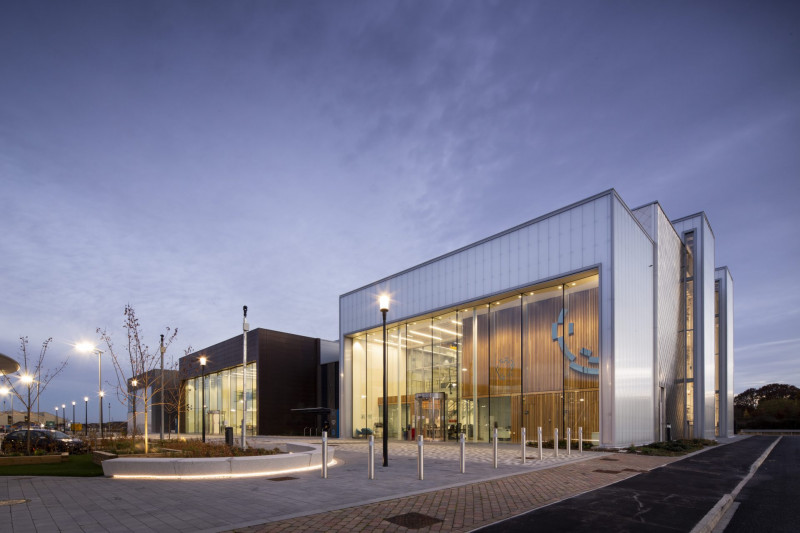About LVV /

The Laboratory for Verification & Validation (LVV) is a unique facility enabling research into the Verification & Validation (V&V) of engineering models across test scales and in all environments.
The centrepiece of the facility contains a series of three large environmental chambers designed for testing under realistic environmental conditions. They offer the ability to control temperature and humidity and to simulate both wind and rainfall. A 3.2m x 2.2m integrated shake table and reconfigurable electro-dynamic shakers enables dynamic testing across a broad frequency range within the chamber. A separate wave tank facility enables generation of deep water wave conditions. A strong wall and floor is also available for the testing of large size components and structures.
The LVV, part funded by the Engineering and Physical Sciences Research Council (EPSRC) and by the European Regional Development Fund (ERDF), enables programmes of testing and research that will drive advances in V&V technology in the field of structural dynamics and beyond. It is larger and more versatile than any facility of its kind currently available for open academic and industrial use.
Model validation refers to the process of building credibility in the predictions of computer models based on comparison with experimental data. The development of new validation methods and test protocols will allow significantly larger portions of the structural design and test cycle to be carried out in a virtual/computational context. The use of computer modelling gives engineering companies key benefits including:
- Faster time-to-market by reducing the need to build and test prototypes.
- The ability to design more efficient, lower cost, products.
- Tools to design bespoke products which can be tailored to different requirements, without the need for time-consuming extensive product development.
- Design capabilities to create products with a longer life span via the modelling ability to accurately predict how and when failures will occur.
Led by the Dynamics Research Group (DRG) in the University’s School of Mechanical, Aerospace & Civil Engineering, the laboratory offers significant benefits across a range of industrial sectors including energy, aerospace, automotive, renewables and medical engineering.
The DRG is already one of the largest specialist groups in the world; the LVV will drive forward collaborative research and cement Sheffield’s position as a world leader in structural dynamics.



